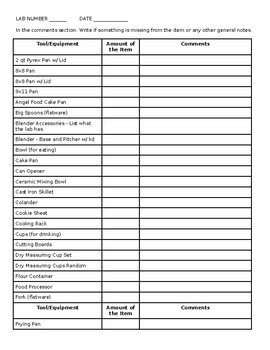

- #Inventory lab update cost code#
- #Inventory lab update cost download#
Q: If I buy the same product again at a different price, do I need to create a new MSKU?Ī: I always use the original MSKU because Amazon doesn't want us to create multiple MSKUs for the same product. This saves you time because you don't need to enter the same “common” info over and over again. Q: Will 3rd-Party Listing Services such as InventoryLab let you create Custom MSKUs? InventoryLabĪ: Yes and listing products is faster than it is in Seller Central because then you can enter a MSKU prefix. Amazon doesn't include the MSKUs with the products that they ship out. SH-051917_7ZU2264Q – The Q at the end means that this was a lead from Quincy Lin's shoe list.ĭon't worry about buyers seeing how much you paid for an item.SH-031017_1-W9DSW1297 – At one time I included the shoe size.

The letter “G” means that the book is listed as Good.
Book-Amazon-07.41G – Added the supplier (Amazon) and the book condition. GM-07-13-16-_4-1.25 – GM stands for General Merchandise and added the buy cost. FBA 072715 03 – Added in “FBA,” the buy date and a number on the end to keep the MSKU unique. LR-POYN-BC52 – Amazon generated this one. You'll notice that the MSKUs evolved over time. These examples are taken from my actual inventory. Source – who found the product or how you found the productĪs you start customizing your own MSKUs, you'll probably change the format a few times. Ranking on the date that you're listing it. How you format it is up to you and it should contain information that will give you the “at-a-glance” information that you need. You have 1 to 40 characters to use for your Merchant SKU. Spreadsheet Users: Save more time with Caleb Roth's Tracking Spreadsheet because it will calculate the COGS and create reports for you. #Inventory lab update cost code#
There's really no limit on how you can code your MSKUs and how you can sort them to produce reports that will help you grow your business. The product coded with the “5” at the end is the best seller in May. These rows tell me that I sold 11 wholesale products (WS) from the company coded as EL.

The above image is from my May Custom Transaction Report sorted by MSKU. Then if you sort by MSKU, you can get helpful information. Many times you'll have your data in a grid or spreadsheet that you can sort. In the above image, I paid $19.99 for the first item and $24.00 for the second item. Having the buy cost coded into the MSKU eliminates the need to go back and search for your buy costs from receipts or other spreadsheets.
#Inventory lab update cost download#
Once you download it and format it so it's easy to read, you can go through and enter your buy costs for each sold item. One way to calculate your monthly cost of good sold (COGS) is to use the Custom Transaction Report from Seller Central. Going through each of my products to enter the buy cost is faster now that I have the buy cost coded into the MSKU. The above image is from my BQool Repricer dashboard. Without knowing it, you can price it too low so that you lose money. Repricing: When you reprice your products, you need to know your buy cost so that you can set your selling price.
It was purchased from Famous Footwear (FF). The list date is 06/01/17 (060117) **I use list dates instead of purchase dates. By just taking a quick glance, I know that: The 2nd one is the way that I currently customize my MSKUs. One is generated by Amazon and the other is customized: For the remainder of this post, I'll use the MSKU abbreviation. Seller SKU is also referred to as SKU, Merchant SKU or MSKU. Once I started creating my own Seller SKUs, the time that I spent inputting my buy costs into my repricer decreased dramatically. In my first 14-15 months as an Amazon Seller, I left the Seller SKU field blank and let Amazon generate them for me. Seller Central's Inventory->Add a Product->Offer Info Page Seller SKUs are created when you list your inventory items. I don't claim to understand all of Amazon's definitions, but I do know that our products need a unique Seller SKU. Amazon uses the SKUs in your inventory file to associate your products with the appropriate product detail page in our catalog (if one already exists). The SKU is a critical piece of data in every inventory file that you submit to us. Hello and hope you are doing well! In today's post, I'll cover why customizing your Seller SKUs will give you quick at-a-glance information that will save you time with various Amazon FBA tasks such as bookkeeping, repricing and overall analyzing.Ī SKU (stock keeping unit) is a specific merchant's product identifier.







 0 kommentar(er)
0 kommentar(er)
